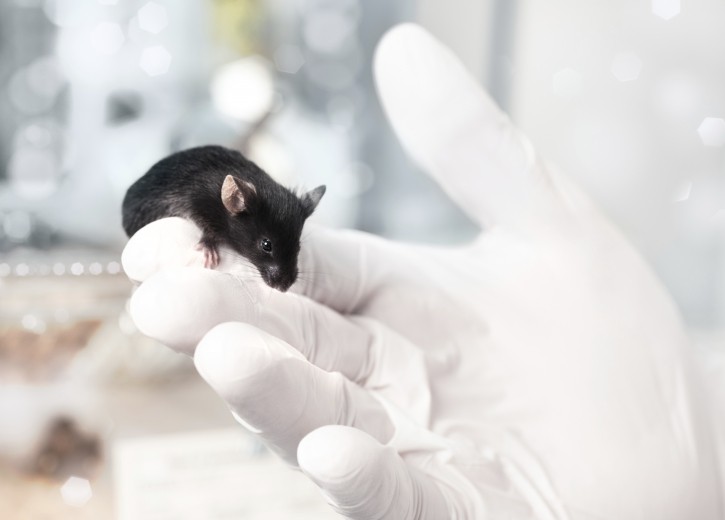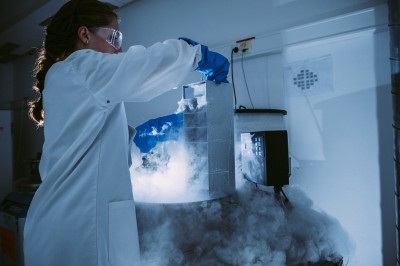Charles River mulls moonshots and mouse models

To learn more about these advances and how researchers are working to make “moonshots” a reality for cancer patients, Outsourcing-Pharma.com talked with Joseph Murphy, PhD, the Director of Science, R&D at Charles River's Cancer Discovery site in Morrisville, NC. Murphy is also a trained immunologist, whose research has focused on cancer angiogenesis and immunotherapy.
“The advent of animal models that more closely mirror humans is just the latest in a series of advances that has given us the opportunity to develop drugs in a more efficient and effective manner,” said Murphy. “In the end, this translates to better and more powerful treatments for patients, which is the ultimate goal.”
Melissa Fassbender, Outsourcing-Pharma.com: How have mouse models improved and changed over the years?
Joseph Murphy: Severe combined immunodeficiency (SCID) mice engrafted with human cancer cells have historically been the model used to measure the safety and efficacy of drug candidates. Their lack of an immune system reduces their effectiveness for studying certain targeted therapies, namely cancer immunotherapies. This is why we are seeing a resurgence of syngeneic models that were developed a few decades ago. Syngeneic models possess an intact murine immune system, which makes them a much better model for the study of immune-oncology drugs.
The development of humanized mouse models engrafted with human immune systems represent another change for the field of oncology drug development. The drug development pipeline is littered with drugs that worked effectively in animals but do not translate well in the clinic. Because humanized mice better mirror the human immune system, they are much more reflective of how a drug works in a human, resulting in fewer failures in the clinic.
Additionally, patient-derived xenograft (PDX) models, which are implanted with human tumors, allow for a personalized approach to oncology research. The patient-derived tumors retain original characteristics, which offer insight into the efficacy of novel cancer therapies.
Fassbender: How are these models helping drive the development of better therapeutics?
Murphy: These models are allowing us to recapitulate what occurs in a human being with cancer. A much closer representation to the human condition provides a better chance of getting a more effective drug, thus reducing the costs of drug development in the long run.
Fassbender: How has a better understanding of biomarkers contributed to better therapeutics and diagnostics tools?
Murphy: Being able to quantitatively measure new biomarkers can act as an early screen in detecting cancer at the earliest stages, when the chances of a cure are greatest. Rather than going to the doctor and being diagnosed with Stage 3 cancer, there are some biomarkers in the blood that can be signals of early onset disease.
For example, the adrenal tumor pheochromocytoma is a rare tumor that can be detected early by measuring certain catecholamine levels, such as noradrenaline and adrenaline. These are normal biomarkers found in blood and urine that when elevated can be indicative of hypertension, but can also suggest the presence of an adrenal tumor. Early detection normally correlates with overall improved prognosis for the patient.
Fassbender: What sort of imaging is being used to track the growth and spread of cancer?
Murphy: Relatively new optical imaging techniques using bioluminescent and fluorescent tags are allowing us to observe how cancer grows and spreads. A mouse is injected with a fluorescent or bioluminescent tag attached to the tumor. A drug compound can then be tested by monitoring tumor growth, tumor reduction or elimination demonstrating drug efficacy.
Fassbender: What is needed to make moonshots a reality for cancer patients? How many years out is this?
Murphy: There is an emerging consensus that combination therapy will be instrumental in future therapies, particularly with regard to cancer immunotherapies. An example of this would be pairing a checkpoint inhibitor—which work by blocking the molecules that switch off immune cells—with a vaccine or conventional chemotherapy drugs.
This is one potentially big moonshot—what sort of combination therapies will bring us the most effective results and bring us closer to curing certain hard-to-treat cancers. There is still a lack of clarity on which combination therapies would work best, but current and impending clinical trials should shed light on this within the coming years.
Fassbender: What is the industry currently focusing on and how will this shift?
Murphy: One interesting path that we’re seeing right now is a bigger focus on deep-learning technologies that are helping us repurpose drugs. The enormous amount of information in databases about specific types of cancers is helping us to reposition drugs toward cancers that can provide the best result, regardless of the original design. We can match what we know about a particular cancer with a specific drug and attempt to predict its success.


















